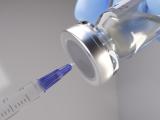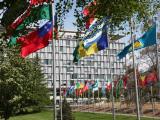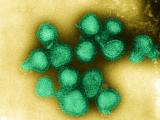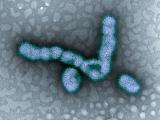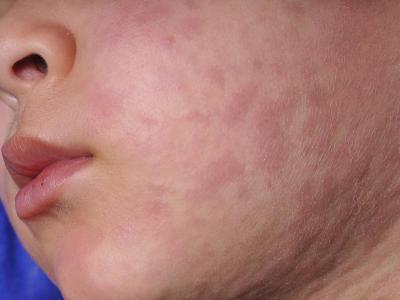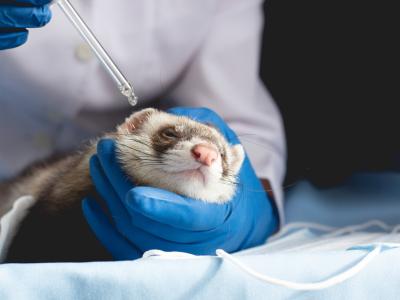Jan 11, 2011 (CIDRAP News) – In the largest study of its kind so far to assess how well 2009 H1N1 vaccines performed in the pandemic setting, new findings from seven European countries showed they provided good protection, a result that mirrors early clinical studies.
The multicenter case-control study from sentinel practitioner networks in France, Hungary, Ireland, Italy, Romania, Portugal, and Spain also gauged the effectiveness of the 2009-10 seasonal flu vaccine during the pandemic months and found, similar to other studies, that it wasn't effective. The group published its findings today in Public Library of Science (PLoS) Medicine.
The researchers are part of the Influenza Monitoring Vaccine Effectiveness in Europe (I-MOVE) group. Nearly 700 practitioners at sentinel sites participated in the study.
A systematic study design
Though pandemic and seasonal flu vaccine campaigns varied by country, the group's goal was to pool data from different countries to sift out overall patterns of effectiveness for the two vaccines. Of six vaccines used at the seven study sites, three were adjuvanted.
Doctors at sentinel sites, using systematic methods, identified patients who sought care for flu-like illnesses more than 14 days after countries launched their pandemic vaccination campaigns. The first country in the group that started immunizing against the 2009 H1N1 virus was Hungary, and the last was Romania, which began its campaign 8 weeks later.
The authors compared subjects who had confirmed 2009 H1N1 infections with patients who tested negative. Practitioners conducted face-to-face interviews with sick patients using country-specific standardized questionnaires, asking them about their immunization status, illness, and potential confounding factors such as age, sex, and chronic disease conditions. Vaccine status was also confirmed in many instances through medical records.
The researchers first conducted a complete case analysis and excluded all individuals with missing values. They then estimated missing data for pandemic vaccination and other covariates using a sophisticated statistical method known as multiple multivariate imputation. The method allowed the researchers to expand the sample size and retain more of the vaccinated subjects.
Researchers stratified the pandemic and seasonal vaccine groups by three age-groups and split the study period into early and late phases.
Overall effectiveness about 72%
A total of 2,902 patients with flu-like illness were included in the analysis, of whom 918 (31.6%) tested positive for the 2009 H1N1 virus. Nearly 7% (197) patients had received at least one dose of pandemic vaccine more than 14 days before they got sick. Of that group, 155 (79.5%) received an adjuvanted vaccine and 40 (20.5%) got the nonadjuvanted version. In total, 12 patients with 2009 H1N1 infections had received the vaccine more than 14 days before they became ill.
The analysis using multivariate imputation, based on 2,902 cases, found an overall pandemic vaccine effectiveness of 71.9% (95% confidence interval [CI], 45.6% to 85.5%). The estimate was higher in patients younger than 65 at 78.4% and slightly higher, 72.9%, in patients without chronic conditions.
The complete case estimates of effectiveness for the pandemic vaccine, based on 1,502 cases, were 66% overall, 71.3% in patients under 65, and 70.2% in those without underlying conditions.
For the seasonal flu vaccine, the adjusted vaccine effectiveness estimate was 9.9% (95% CI, -65.2% to -50.9%), suggesting no effect.
The authors concluded that the 2009 H1N1 vaccine offered good protection against the pandemic virus, especially in healthy people younger than 65. The vaccine was protective as early as 8 days after vaccination.
Data interpretation caveats
The authors included several caveats about the findings. They wrote that the late rollout of the pandemic vaccine in many countries during or after the pandemic peak could mean that part of the population had acquired natural immunity to the virus before they were vaccinated, which could have biased the effectiveness estimates. They also pointed out that the low incidence of medical visits for H1N1 infections and low vaccine uptake could limit the statistical power of the analyses.
The study limited confounding effects, but the researchers said vaccination status and influenza outcome were time-related. Vaccination was a time-dependent variable that increased over time. However, the team found that adjusted pandemic vaccine effectiveness for both early and late phases was above 68%.
Though the timing of the studies and the test-negative component of the study design has the potential to overestimate pandemic vaccine effectiveness, the low number of vaccine failures at all seven study sites was consistent, the report says.
The researchers also noted that the study protocol didn't allow them to measure any differences that may have existed between research center sites.
Expert lauds study design, notes challenges
Edward Belongia, MD, director of the Epidemiology Research Center at the Marshfield Clinic Research Foundation in Marshfield, Wis., told CIDRAP News that the study is well designed and that the approach using cases and test-negative controlss accounts for any differences in healthcare-seeking behavior between vaccinated and unvaccinated groups.
He said the study's limitations are that the group wasn't able to provide separate estimates for adjuvanted and nonadjuvanted vaccines. "One other thing is that almost 80% of the cases came from France, so the results are really dominated by what happened in France," Belongia said.
All studies that measure 2009 H1N1 vaccine effectiveness face the same challenge, that the vaccine was launched about the time the disease was peaking or later, he said. "They accounted for that in this analysis," Belongia added.
Belongia said that, given the good antigenic match between the vaccine and pandemic virus, he wasn't surprised to see effectiveness rates in the 60% to 70% range. In children and young adults, the pandemic vaccine effectiveness rates were similar to those seen in clinical trials for the seasonal flu vaccine in previous years. However, he said he hopes future research studies can do more to tease out differences between adjuvanted and nonadjuvanted vaccines.
Valenciano M, Kissling E, Cohen JC, et al. Estimates of pandemic influenza effectiveness in Europe, 2009-2010: results of influenza monitoring vaccine effectiveness in Europe (I-MOVE) multicentre case-control study. PLoS Med 2011 Jan 11;8(1):e1000388 [Full text]

